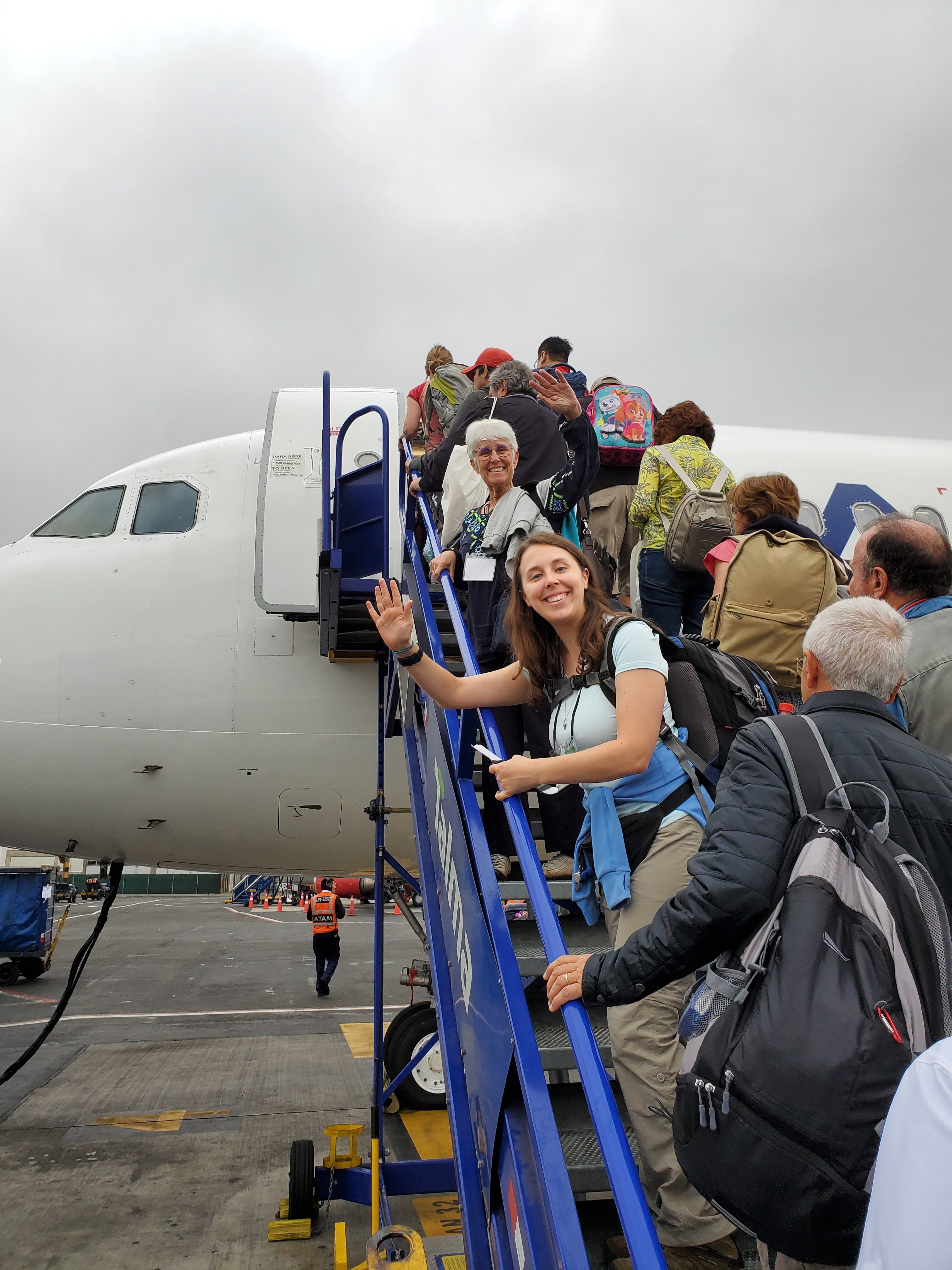July 16 Tuesday
Birds singing loudly in the distance. Soft mud squishing below.
Fresh and juicy watermelon and pineapple. Salty remnants of sweat and sunscreen.
Sturdy rope. Damp clothes. Rough bark.
These are the sounds, smells, tastes, feelings, and sights of our only full day at ACTS (Amazon Conservatory of Tropical Studies). We jumped right into the middle of the jungle action at 5:30 in the morning for a sunrise walk in the canopy. The scattered clouds prevented us from getting a clear view of the sunrise, but we did have an incredible view of the rainforest filled with mystical mist and mysterious fog. Many of us found that we were less afraid than we had been the night before, which allowed for more confident observation of the surroundings.
After making it back to the lodge for breakfast (of eggs, potatoes, chorizo, vegetables, bread with various spread, and fresh fruit) we prepared ourselves for another walk through the canopy- this time with a set task. We were to work with our groups to identify, discuss, and draw epiphytes from one of the many platforms, but only after we took time individually to reflect on the five senses of the forest. Many of us found this reflective time to be peaceful and a moment of connecting with the world around us. All the while, eyes were everywhere on the lookout for creatures both big and small.
At lunch, we enjoyed rice and beans, chicken, Peruvian french fries, salad, a medley of cooked vegetables, and pineapple for dessert. Many requested the recipe for the chicken because it was that tasty! Following lunch was a small break. Some took the time to catch up in their journals, while others were lulled to sleep in hammocks by the sound of a passing rain storm. Some worked on their group assignments for the day, while others chatted with each other casually about ourselves and how we can apply these experiences in our own classrooms.
We all reconvened to discuss our findings from the morning before heading out on another trail. We took our time noticing the larger-than-life lush plants around us, and we were totally obsessed with the animals we saw (including but not limited to a tarantula, a Peruvian fire stick (a walking stick insect), and a five-foot span of sprawling army ants). The trail met up with another trail, and from there we split into two groups. Some of us walked the canopy again while others went back to the lodge for some much needed rest and relaxation.
For dinner we ate beef, rice, mashed potatoes, vegetables, and bananas with cream for dessert. After some partner discussion, we once again divided into two groups. Those who wanted to experience the bioluminescent fungus on the leaves of one particular tree- the Bucinaria- headed out on the tails, and those who needed some more rest and relaxation stayed back at the lodge. Despite the 100% humidity, our only full day at ACTS was one our five senses will not soon forget.
As we close our eyes, images and memories of moments from today blur together, and we leave you with a sampling of our reflective writing about our enlightening experiences:
Enlightenment
Walking through the jungle forest, the sound of rain pitter-patters to the ground, hitting leaves along the way. Each step is taken carefully as the fallen dead leaves become slick, and the dirt forest floor turns to mud. In preparation to walk down the trail’s wooden steps, a hand rail was put in place. Despite much care taken, the foot slips off the first step with great speed. Surprisingly, it does not land on the next step. Instead the foot lands on top of a gently swaying hammock with a jolt as the lush jungle trail is transformed into the mosquito laced confines of the lodge’s dining hall. The consistent rainfall heard from the vision can still be heard, but all of the other surroundings have been replaced. It takes a moment for the senses to adjust and realize what happened was a dream. The only logical explanation is that while resting, the mesmerizing sounds of the passing storm must have created vivid visions of what was seen and experienced earlier in the day. At this moment the truth has been revealed: the lines between fantasy and reality are bridged by the enchanting power of the Amazon rain.
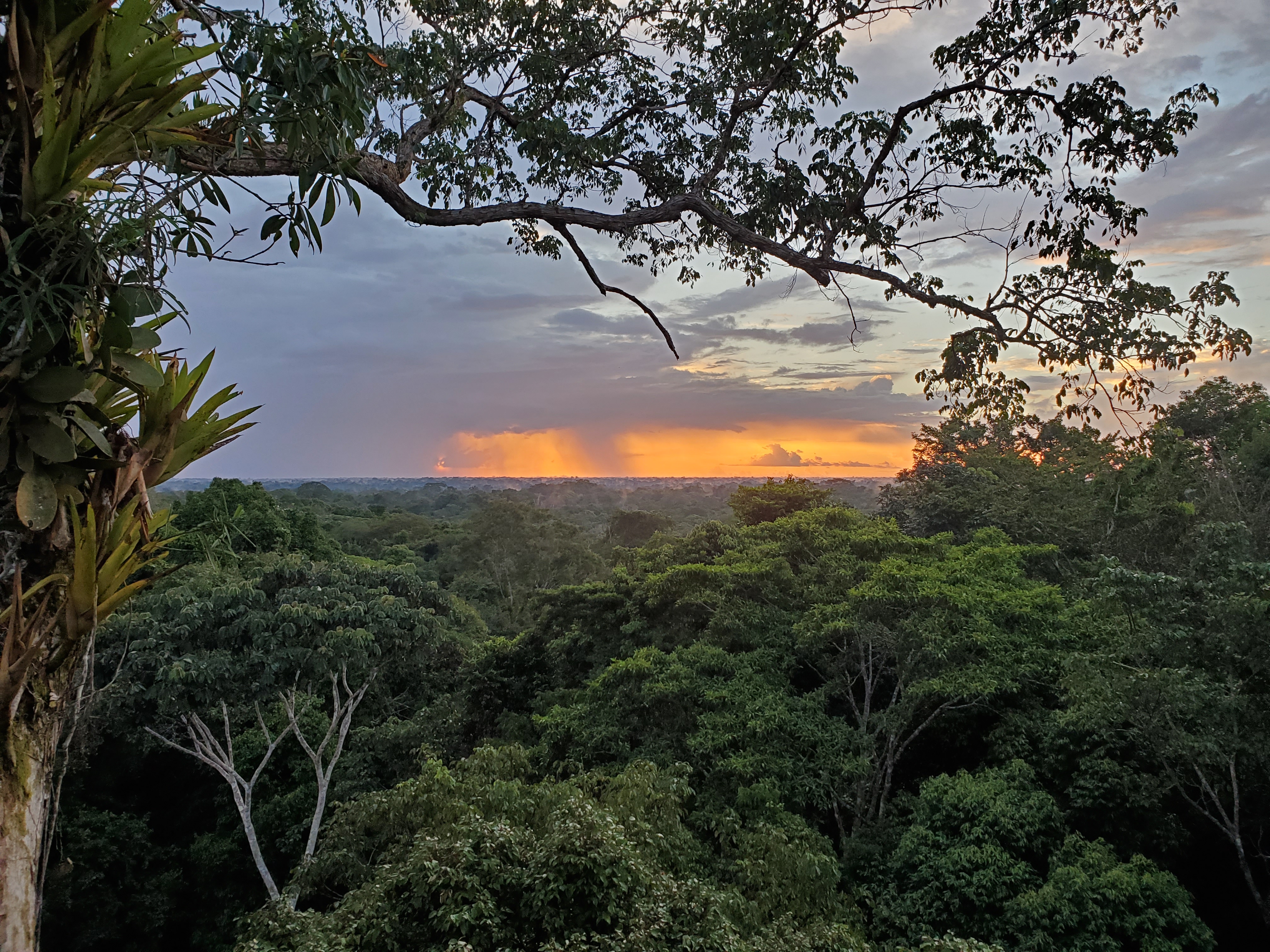

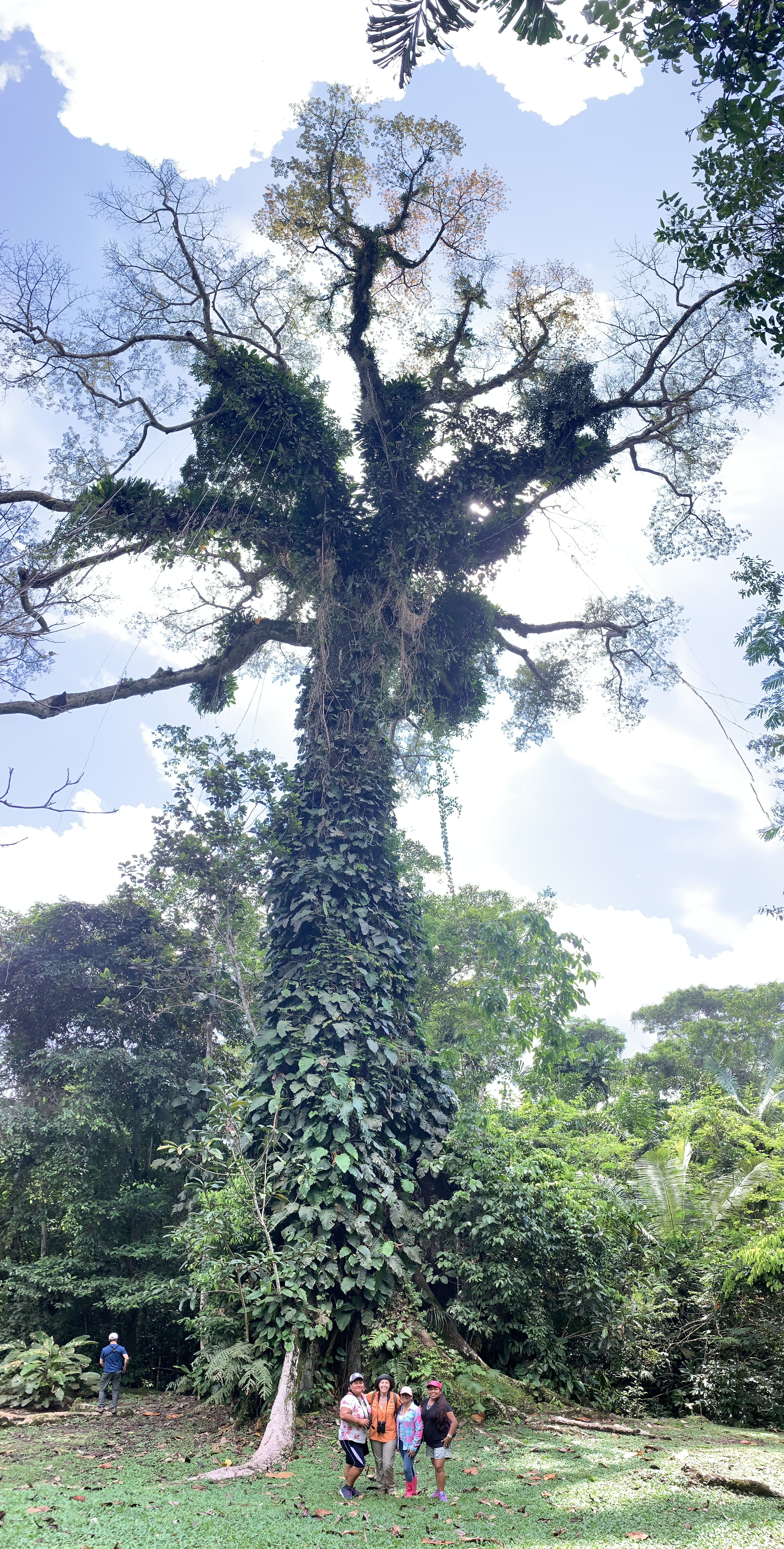
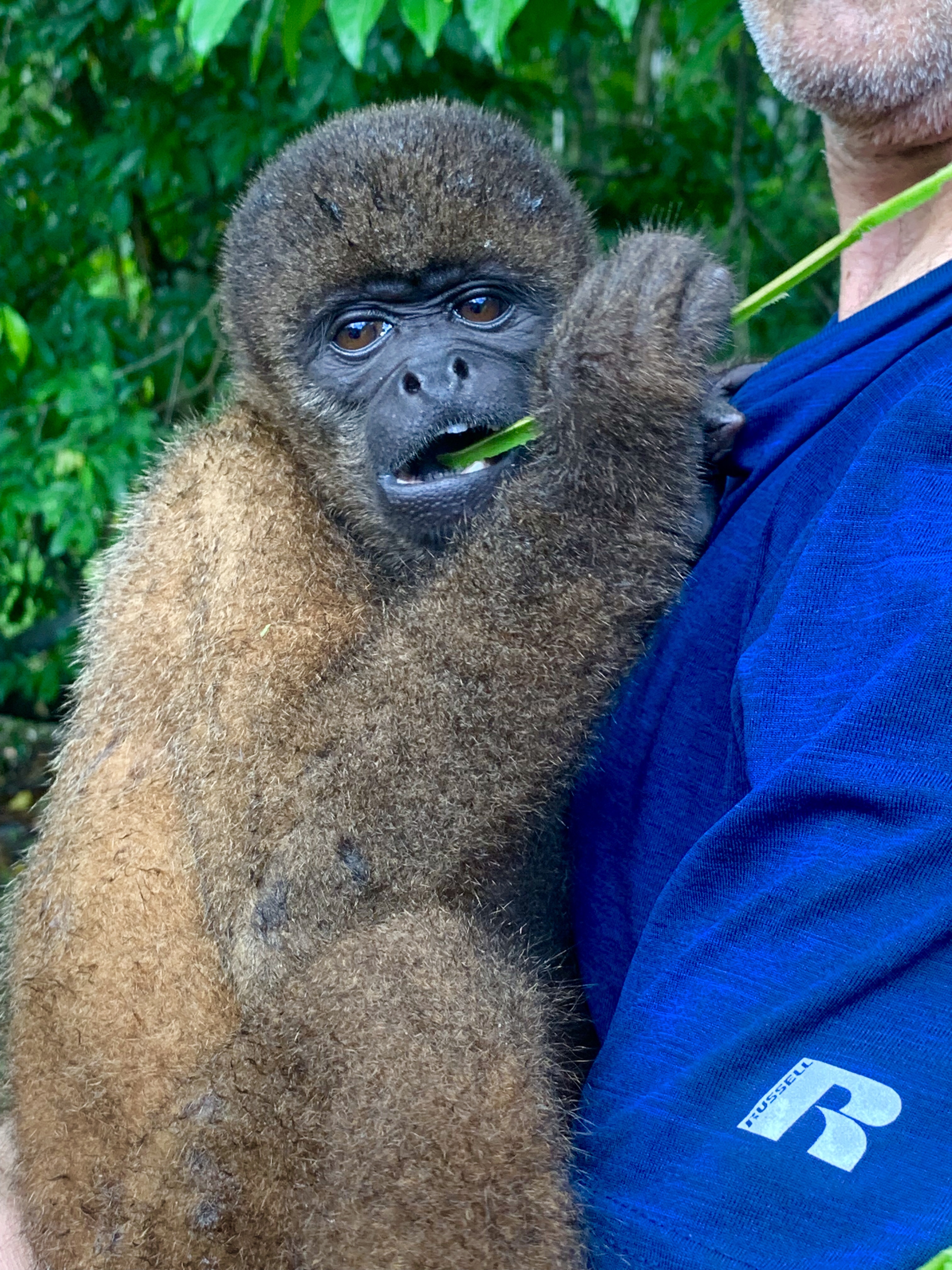


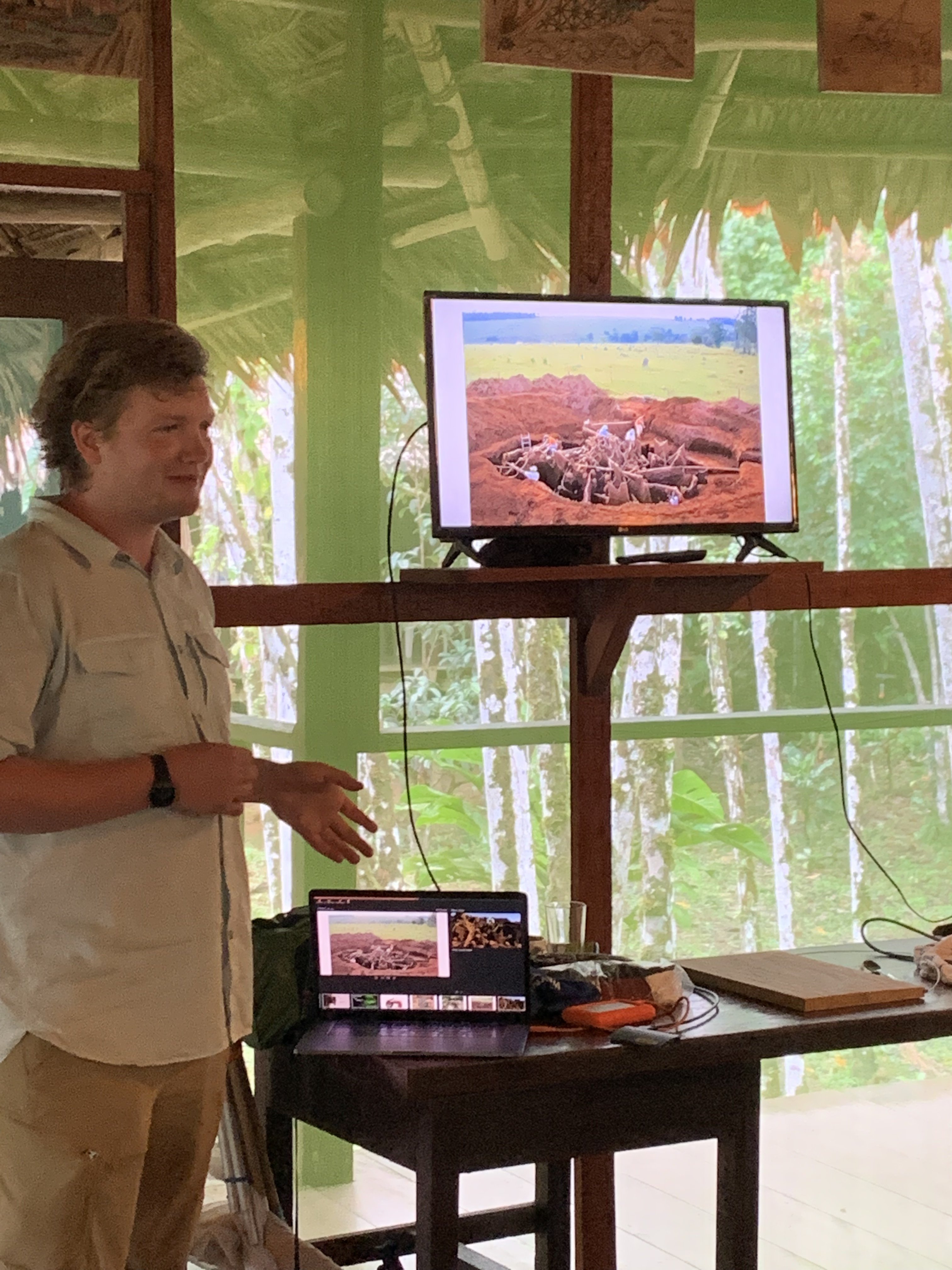
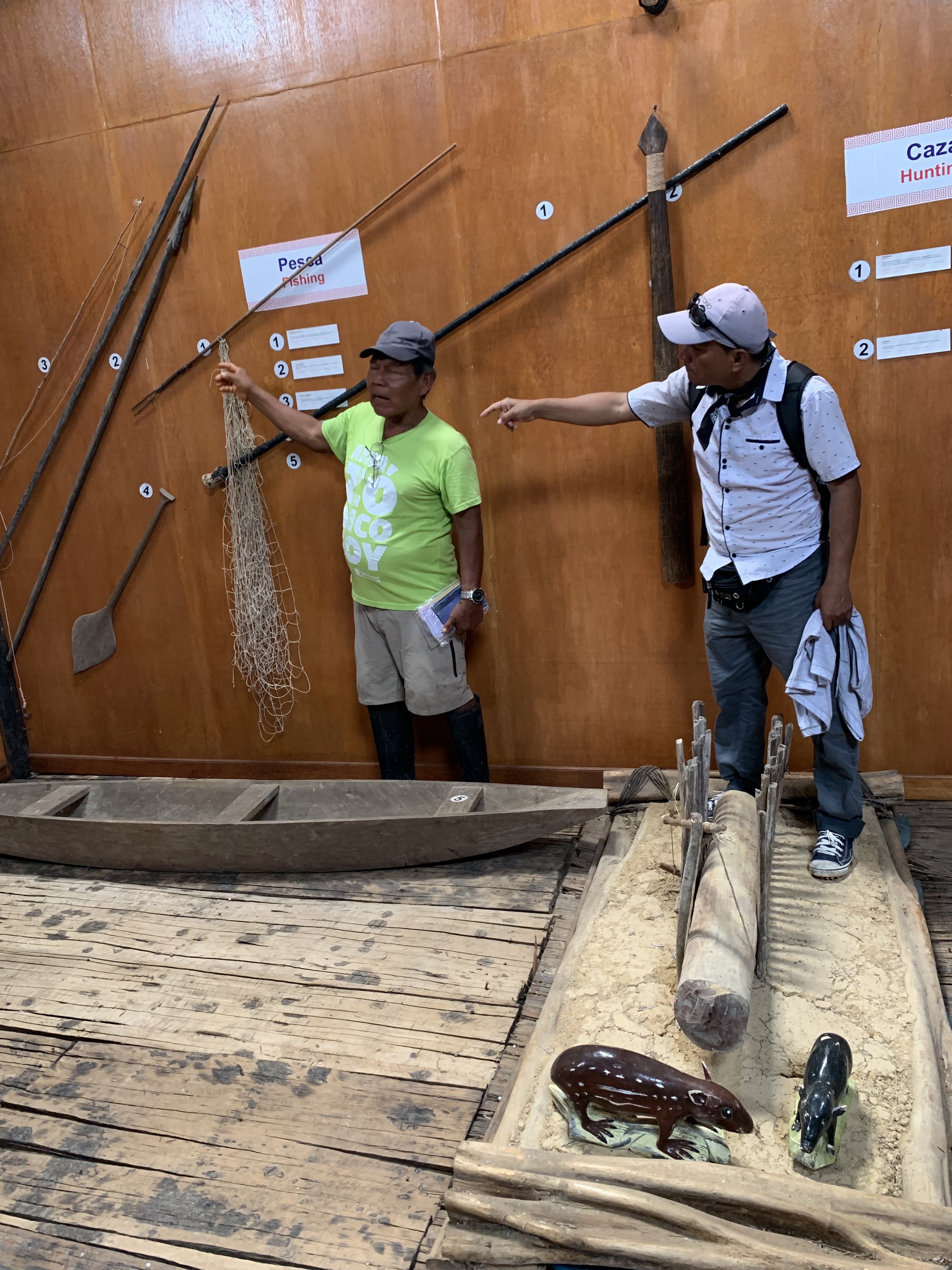
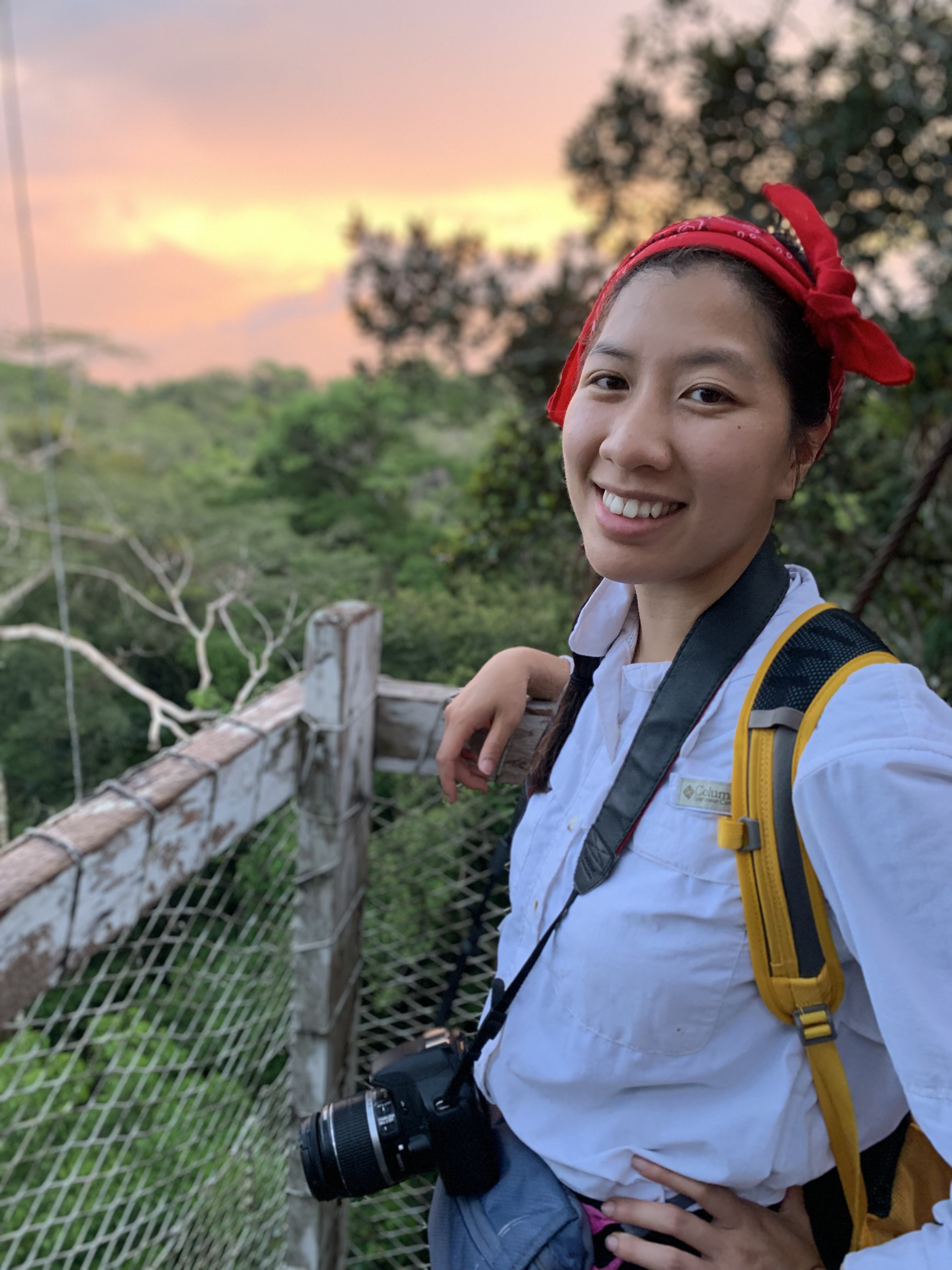
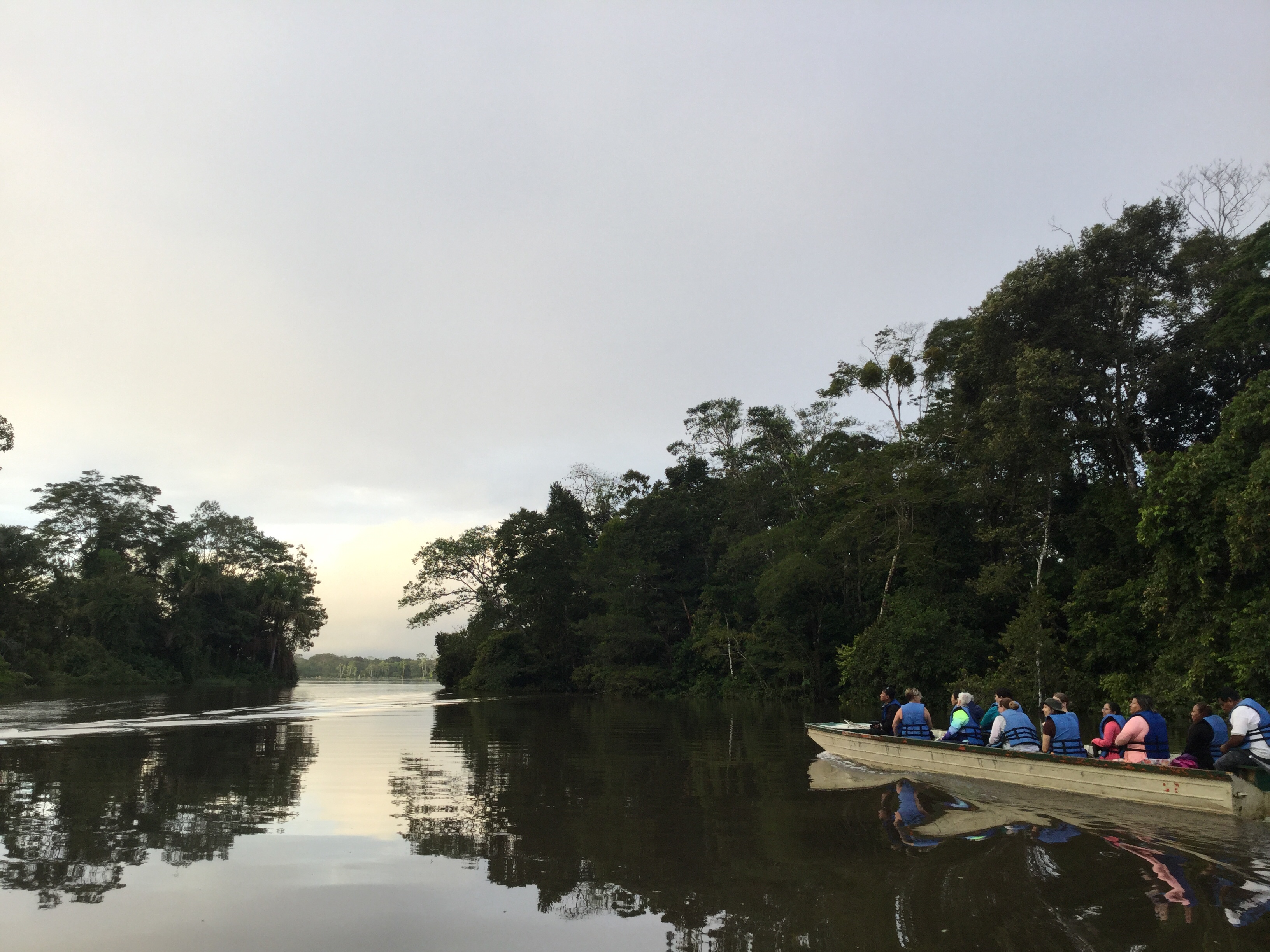
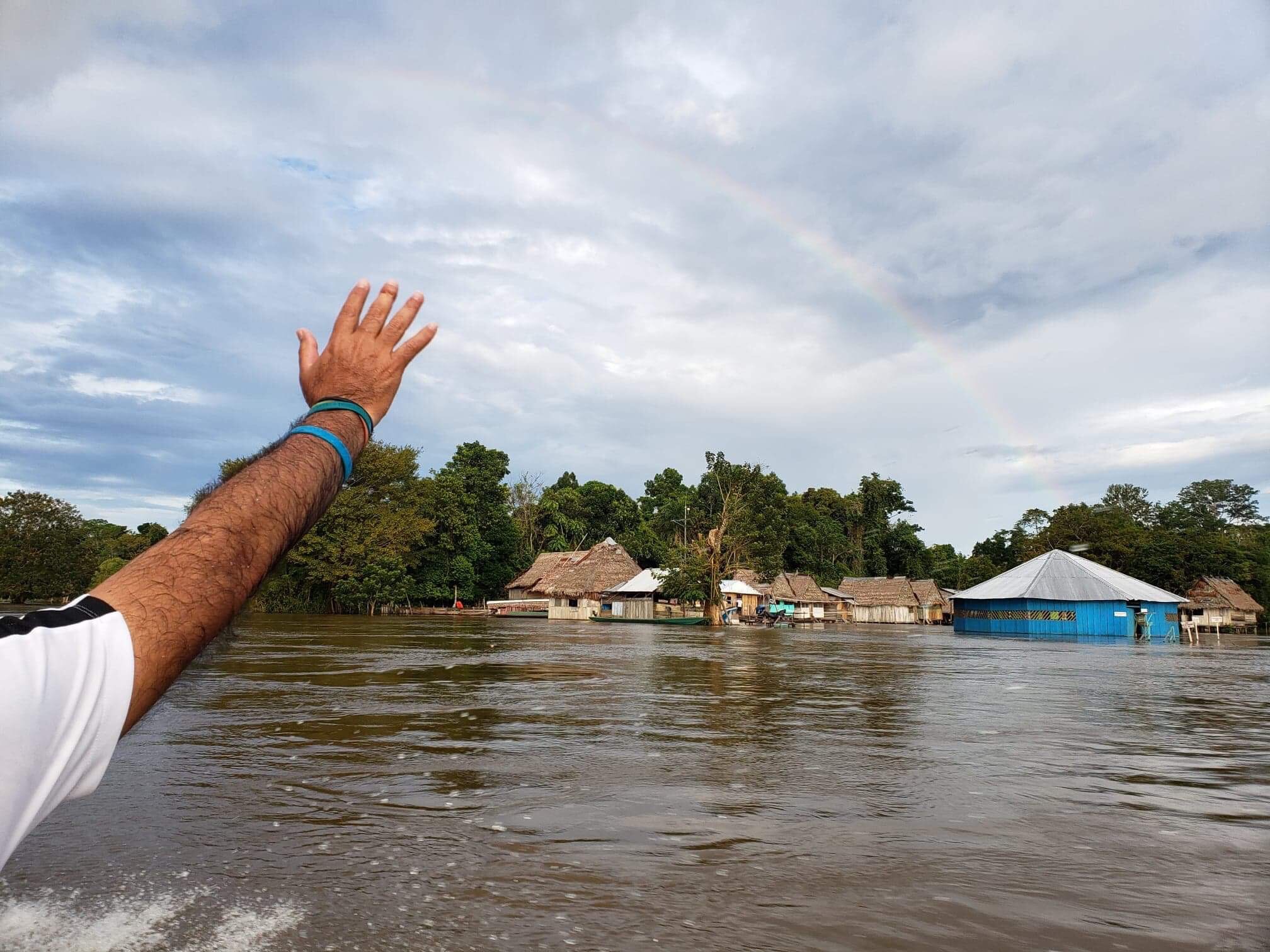
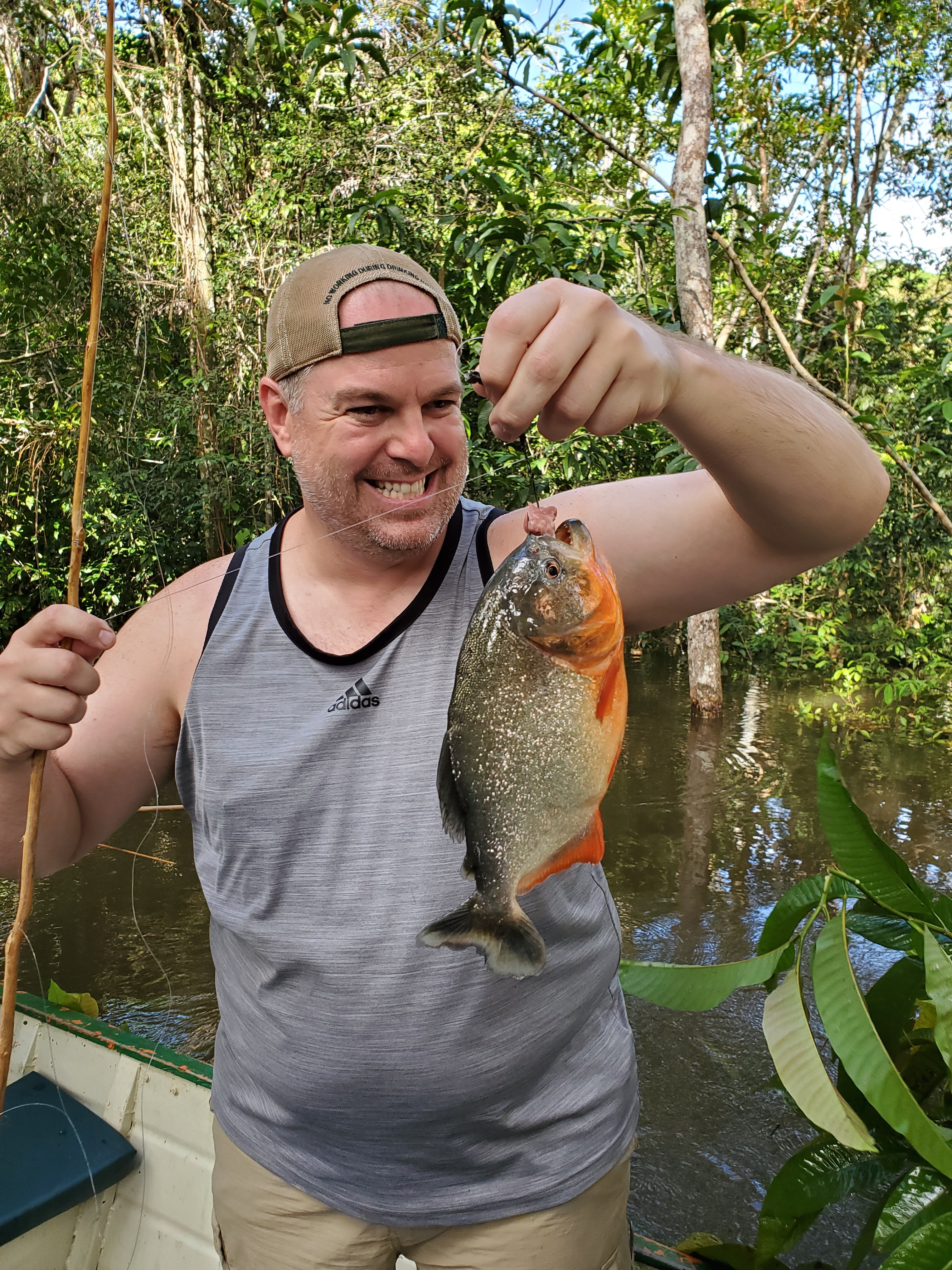
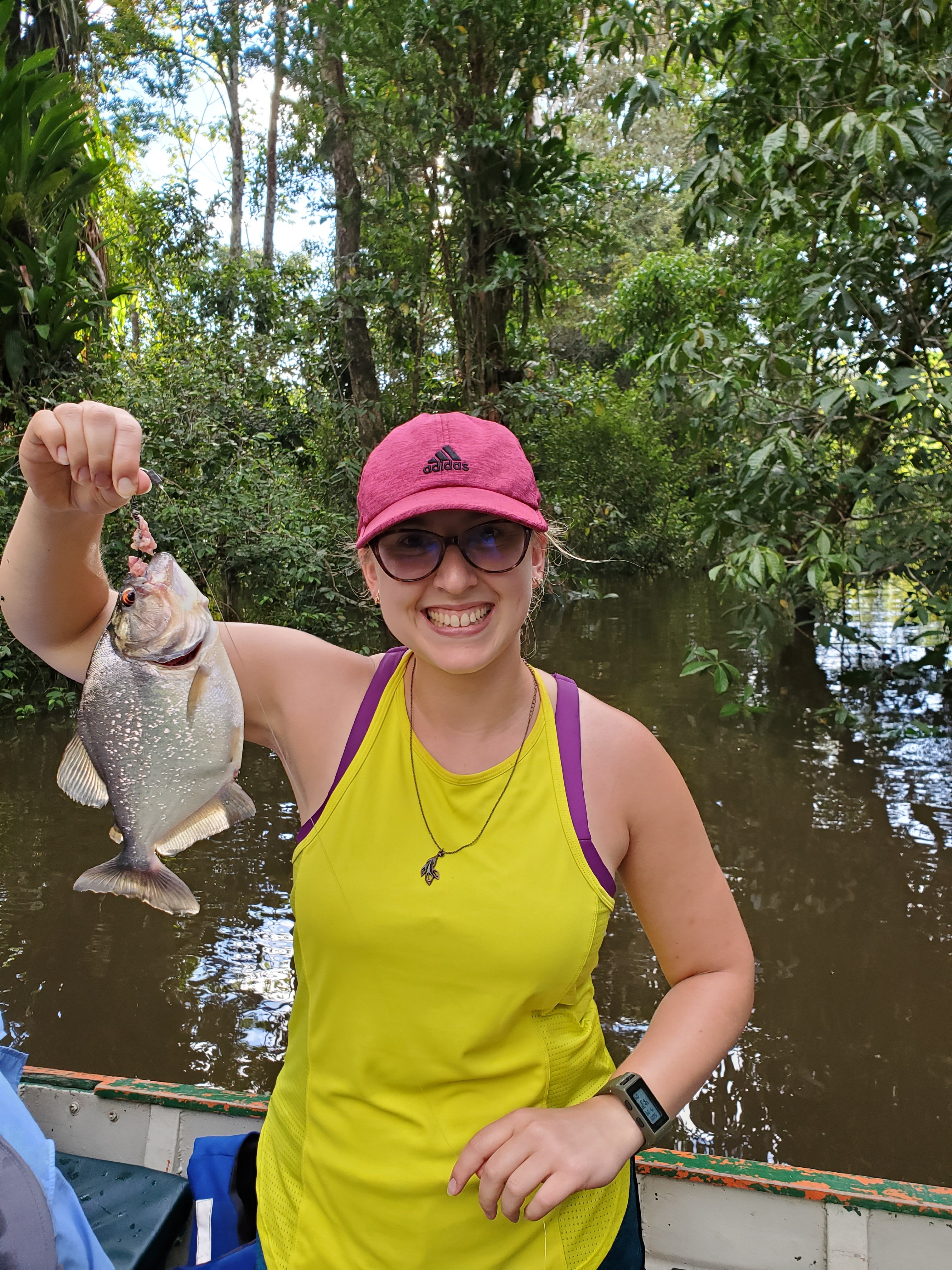
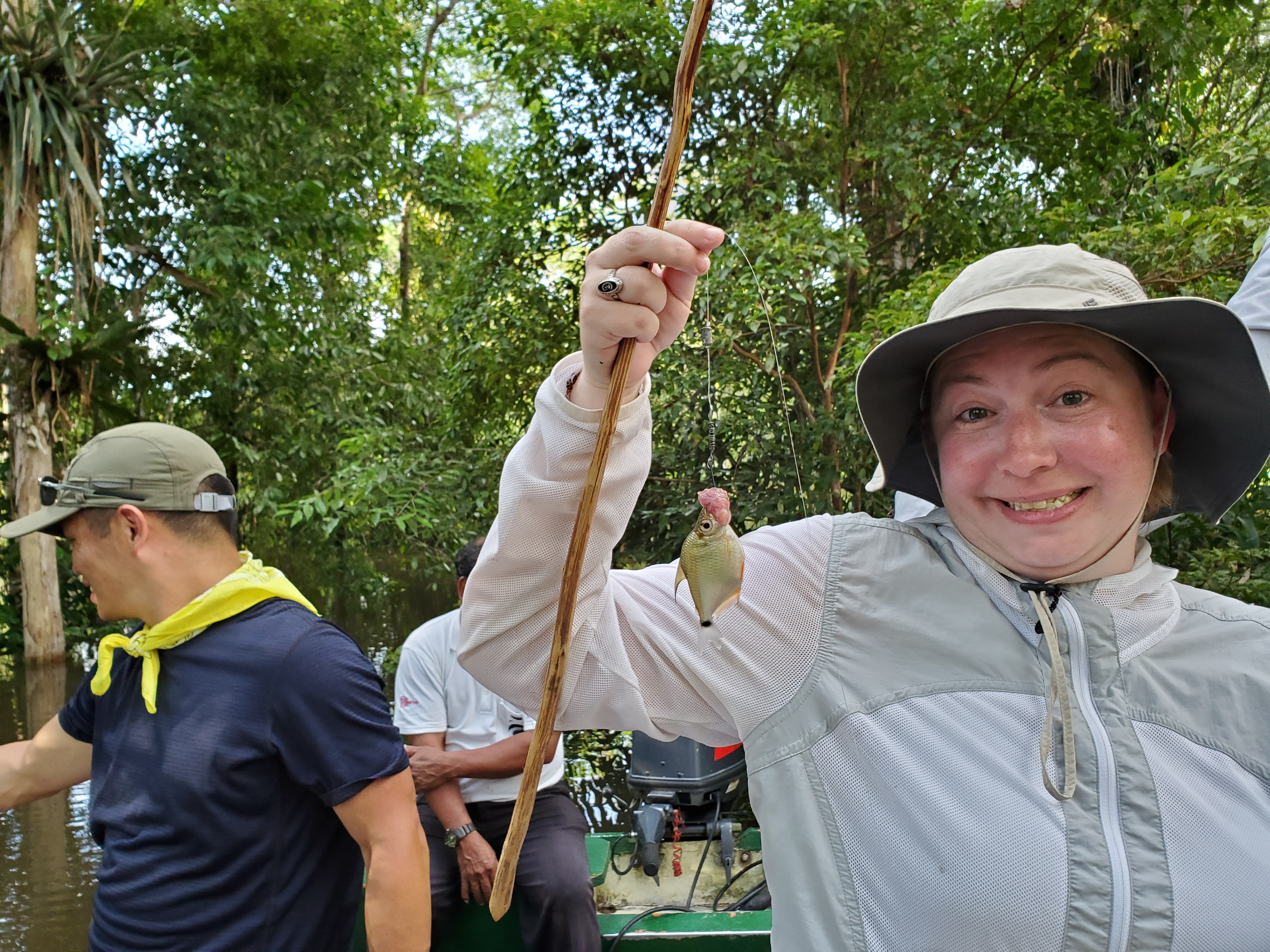
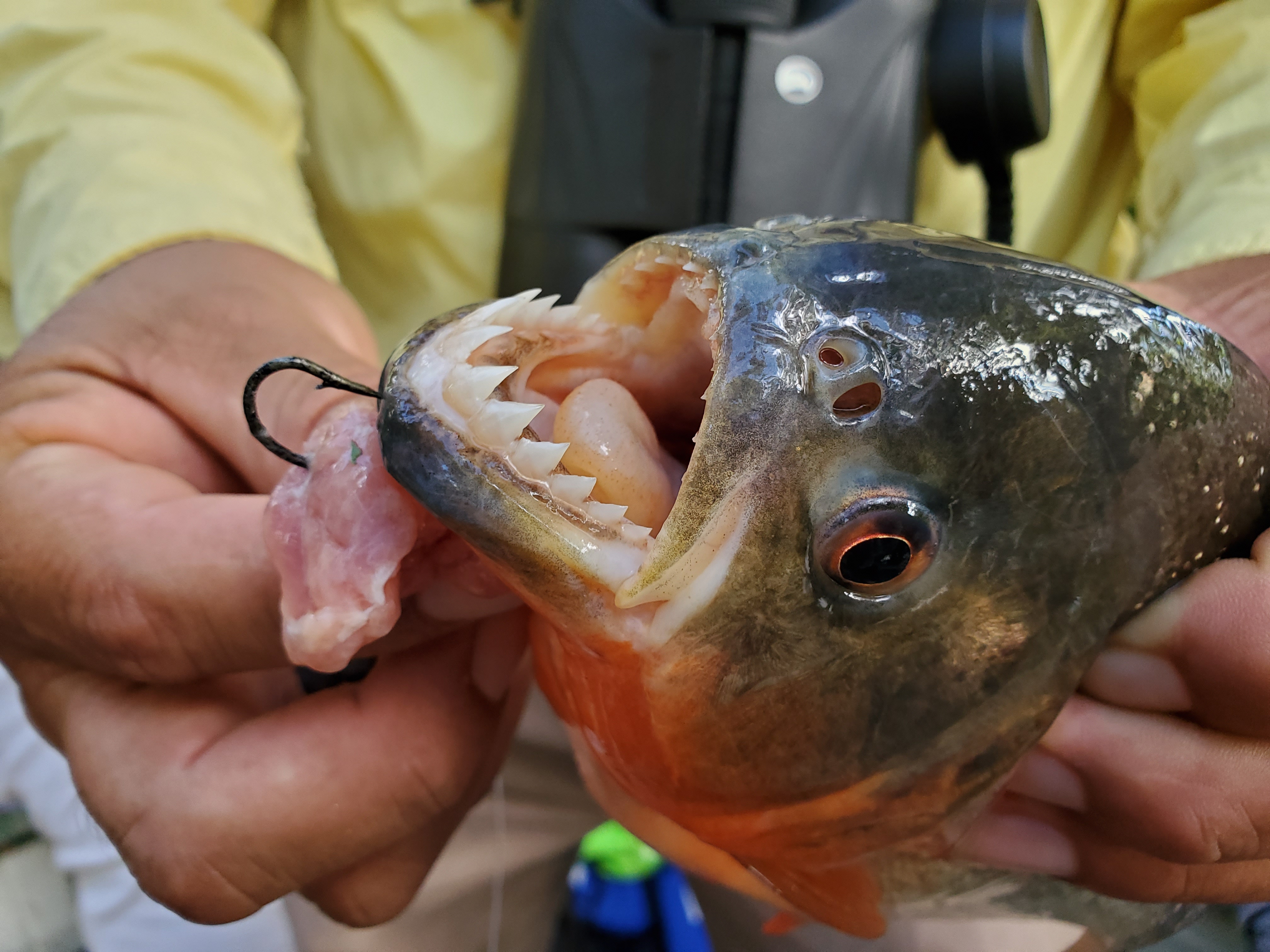
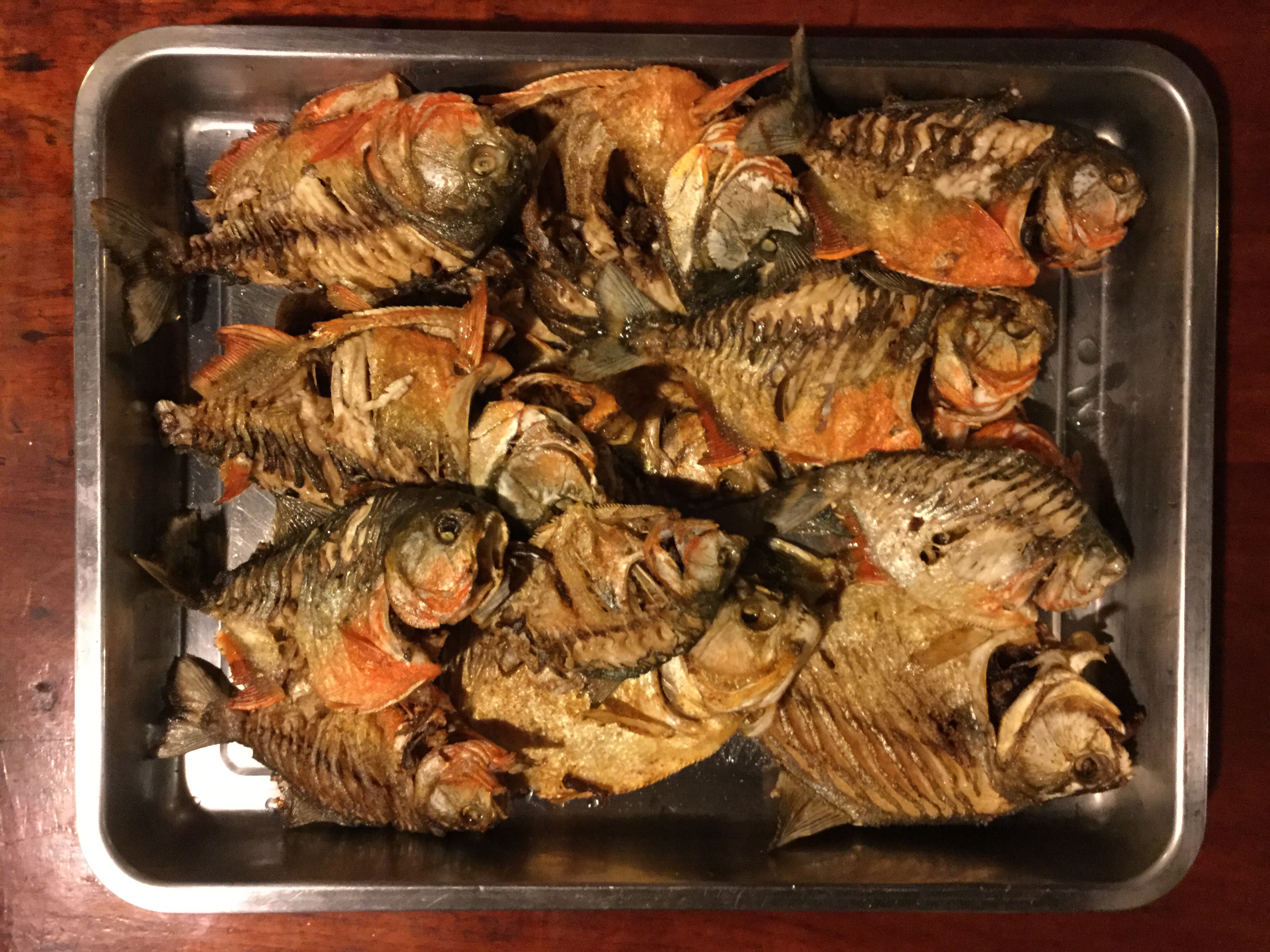


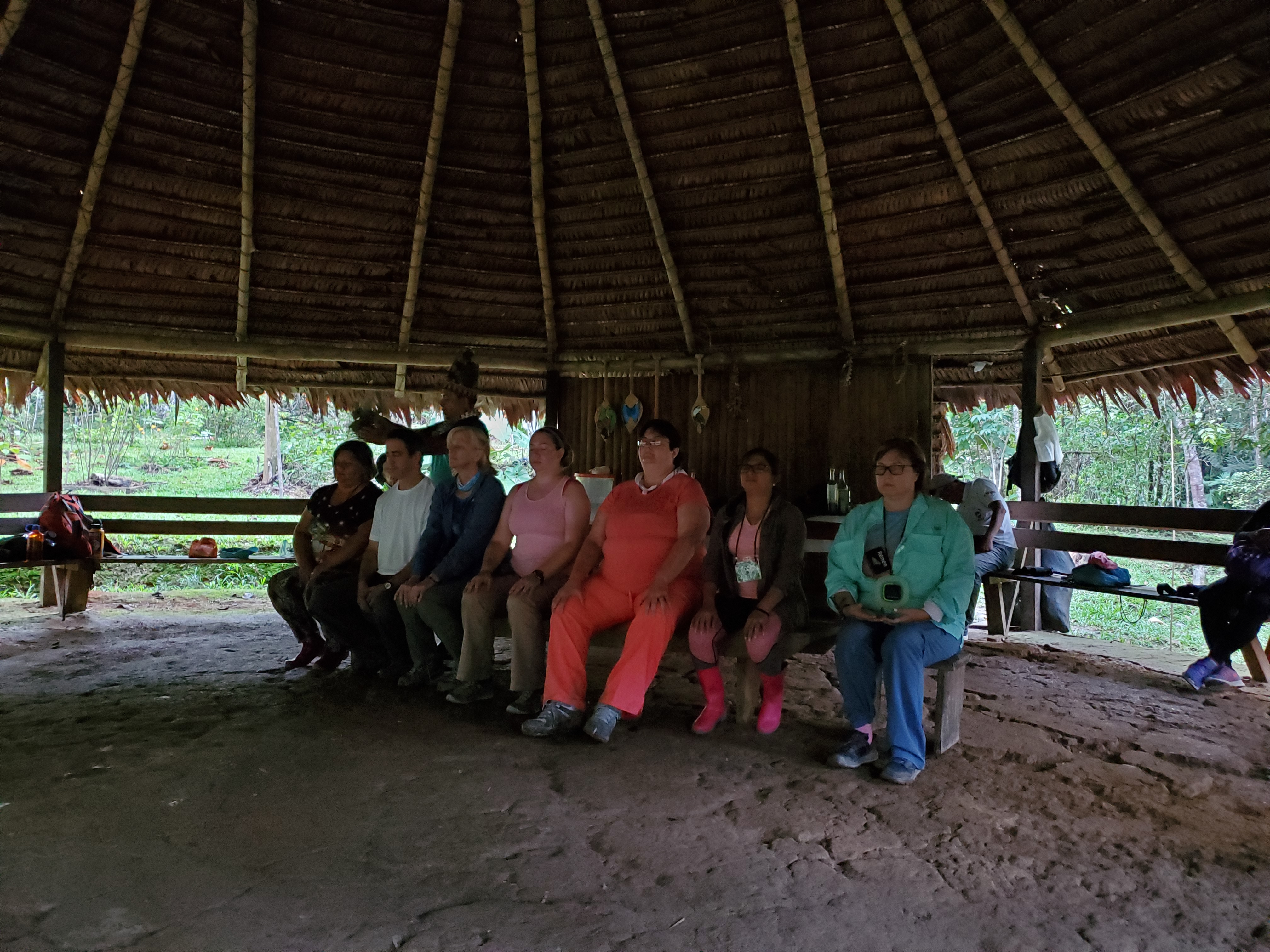

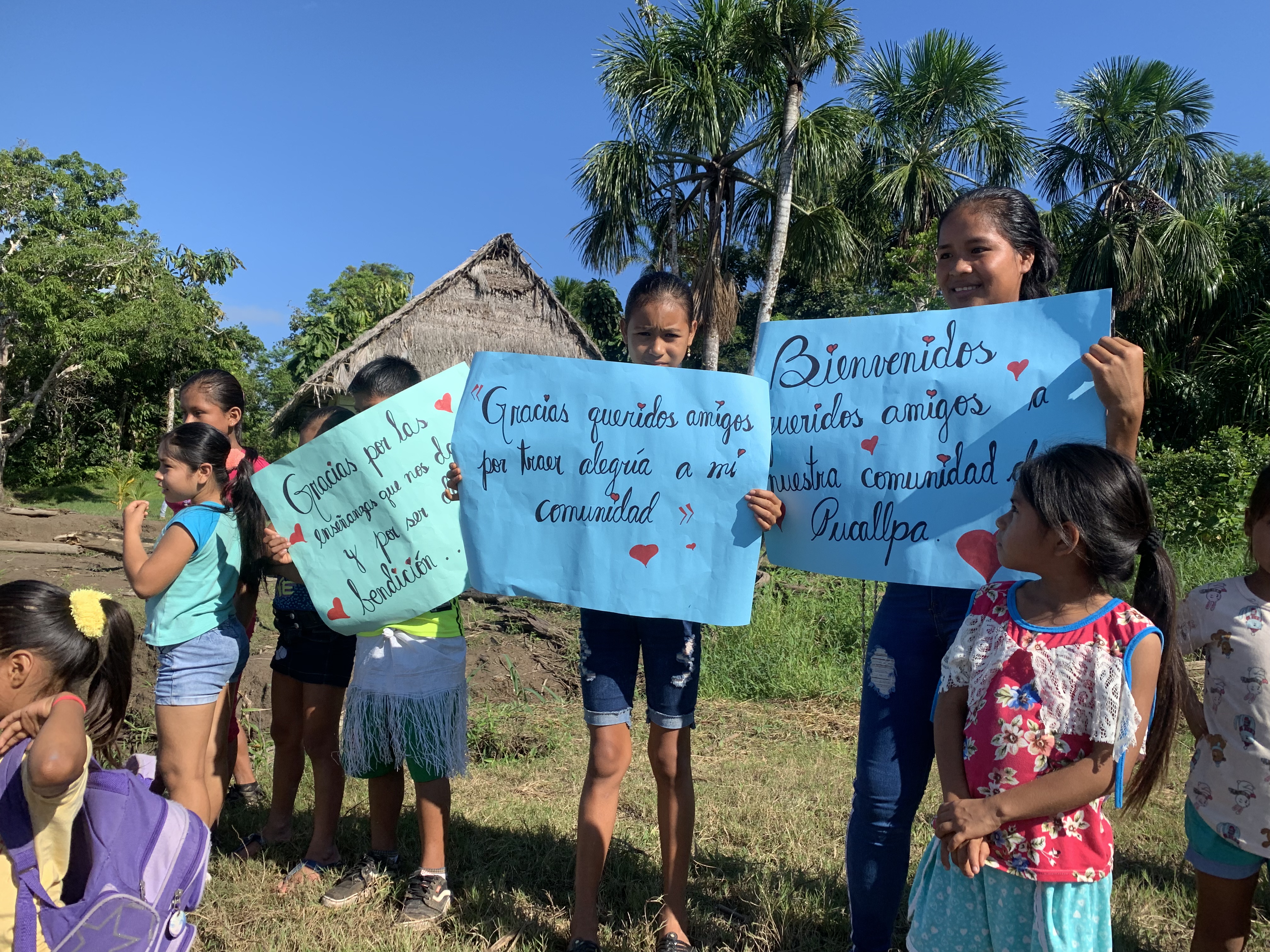
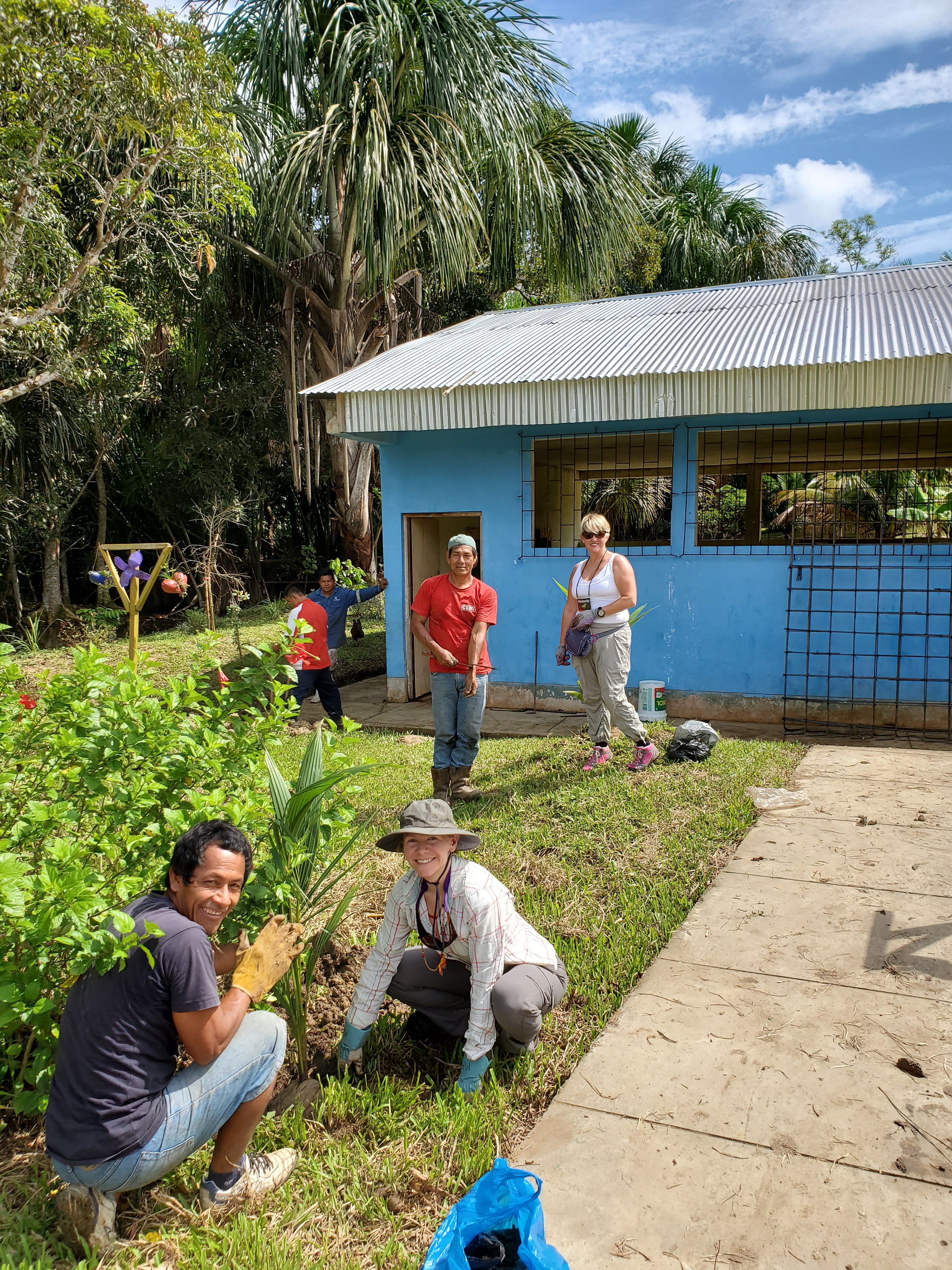
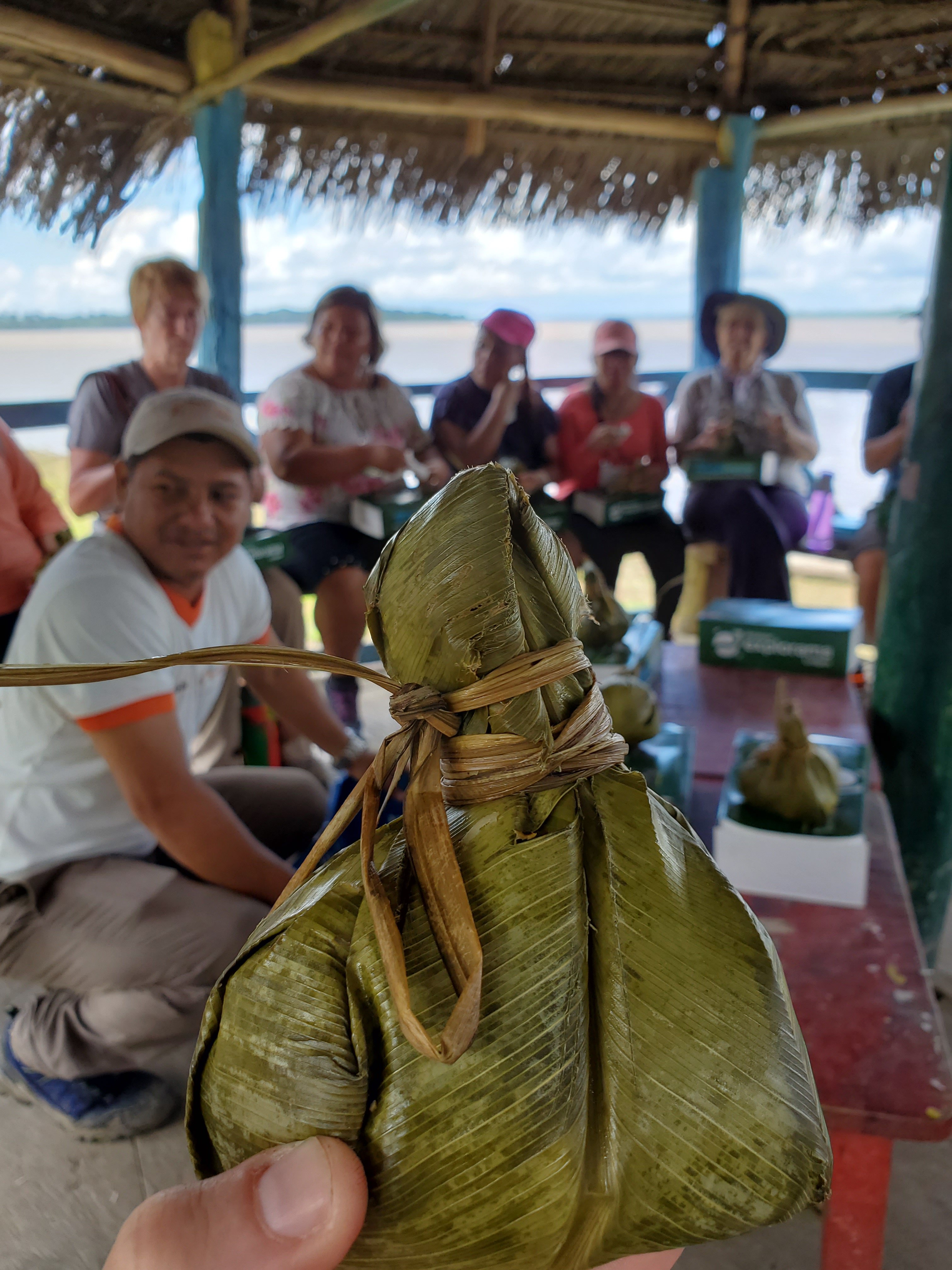
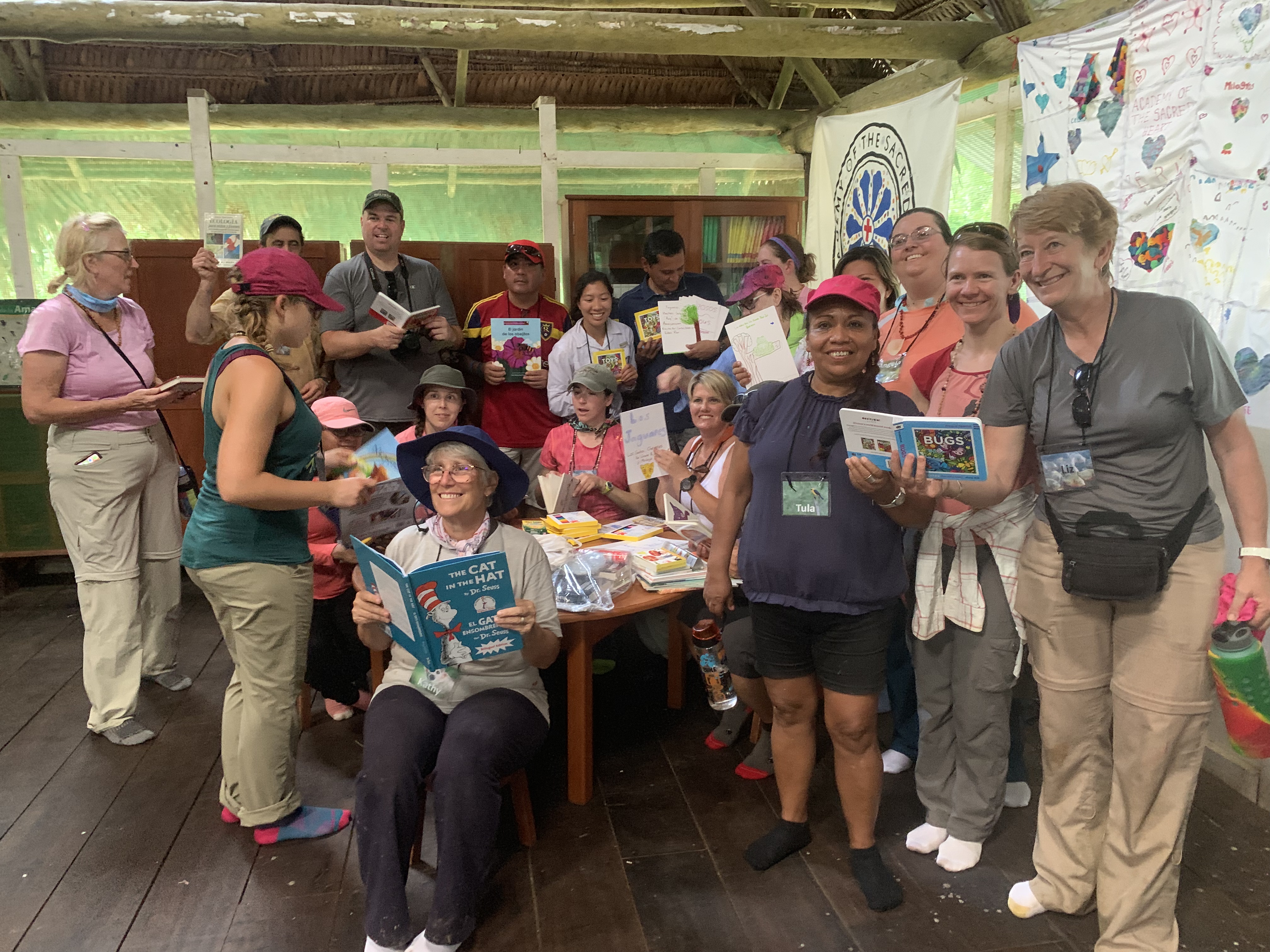
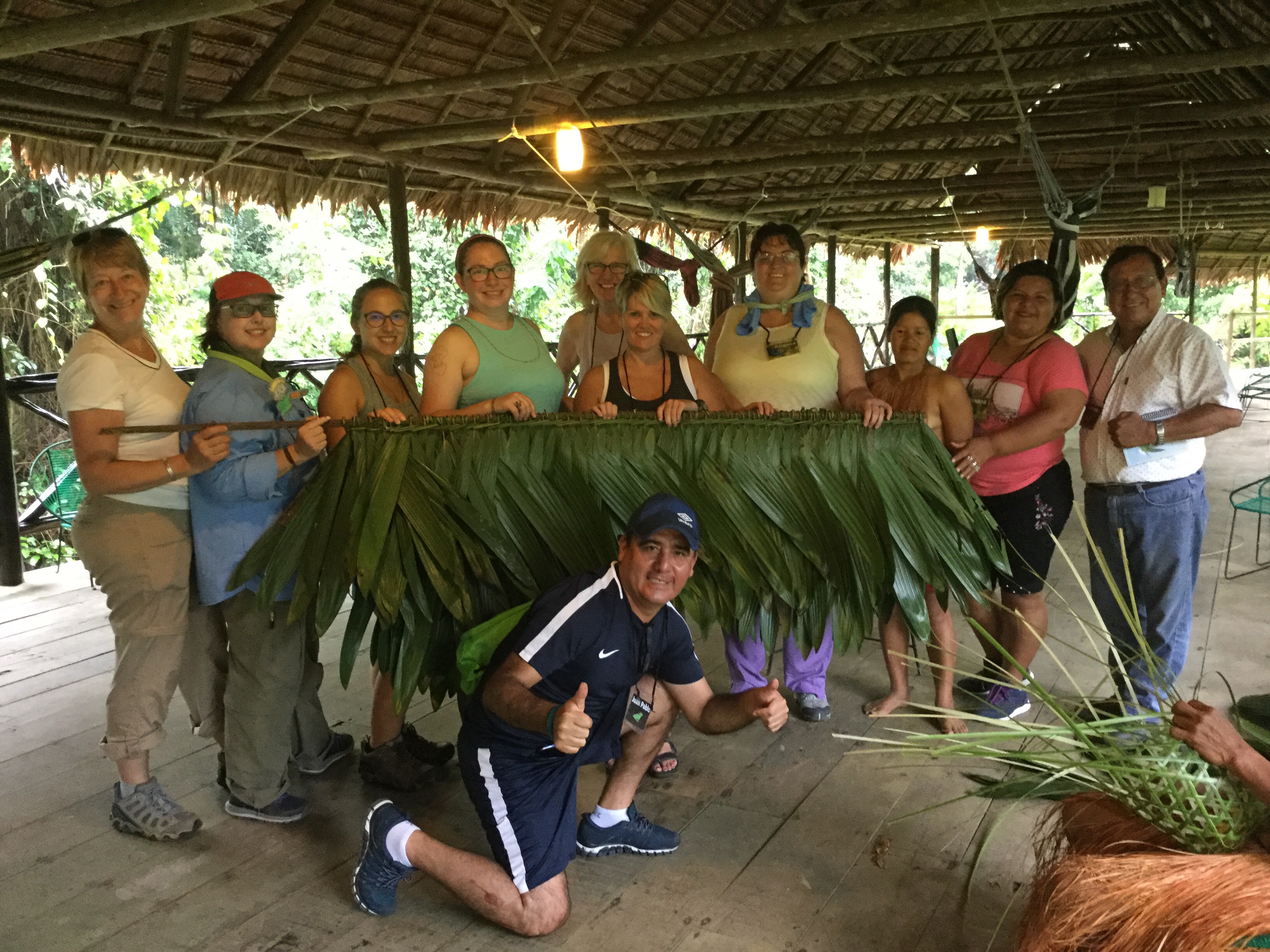
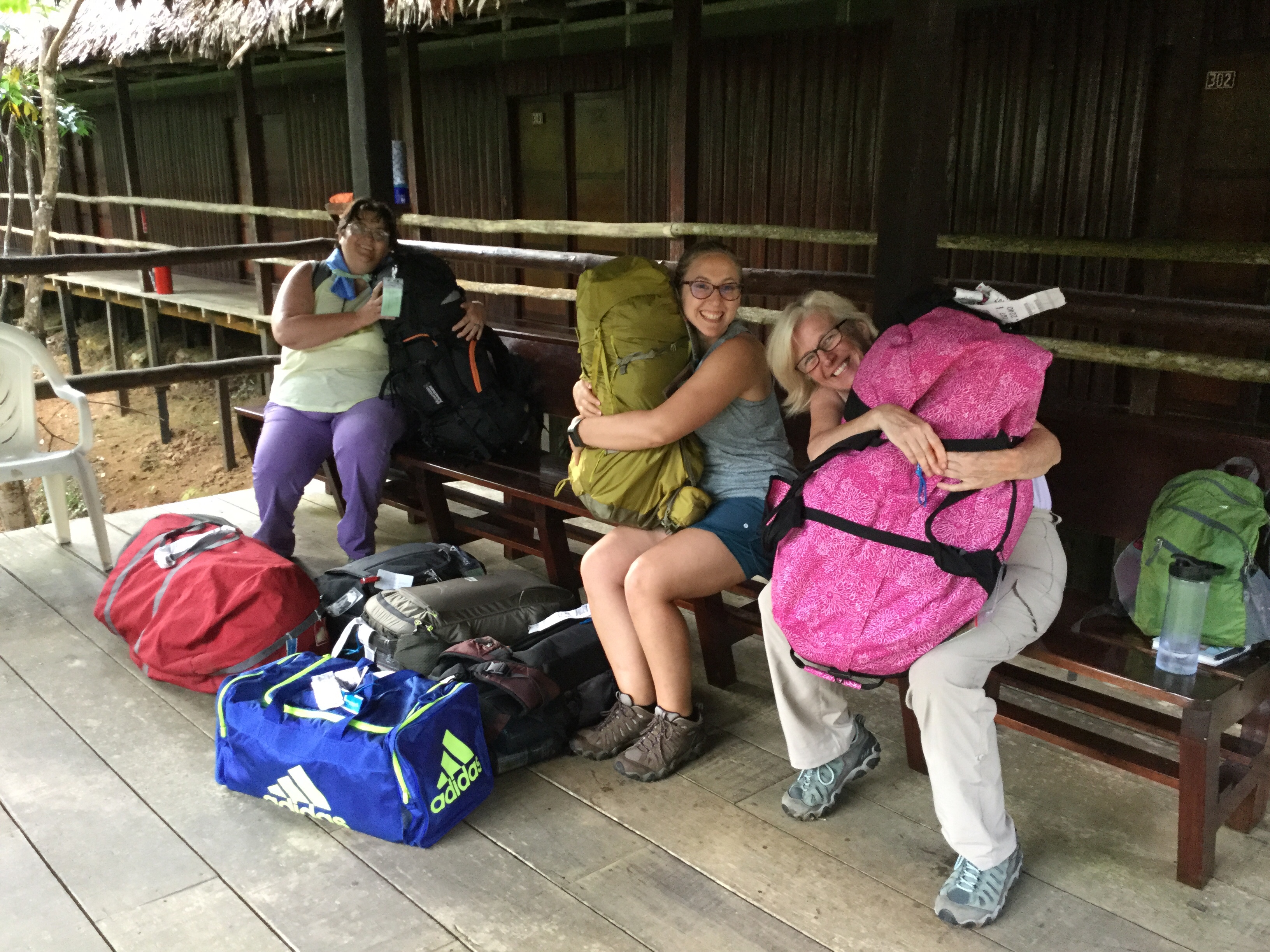
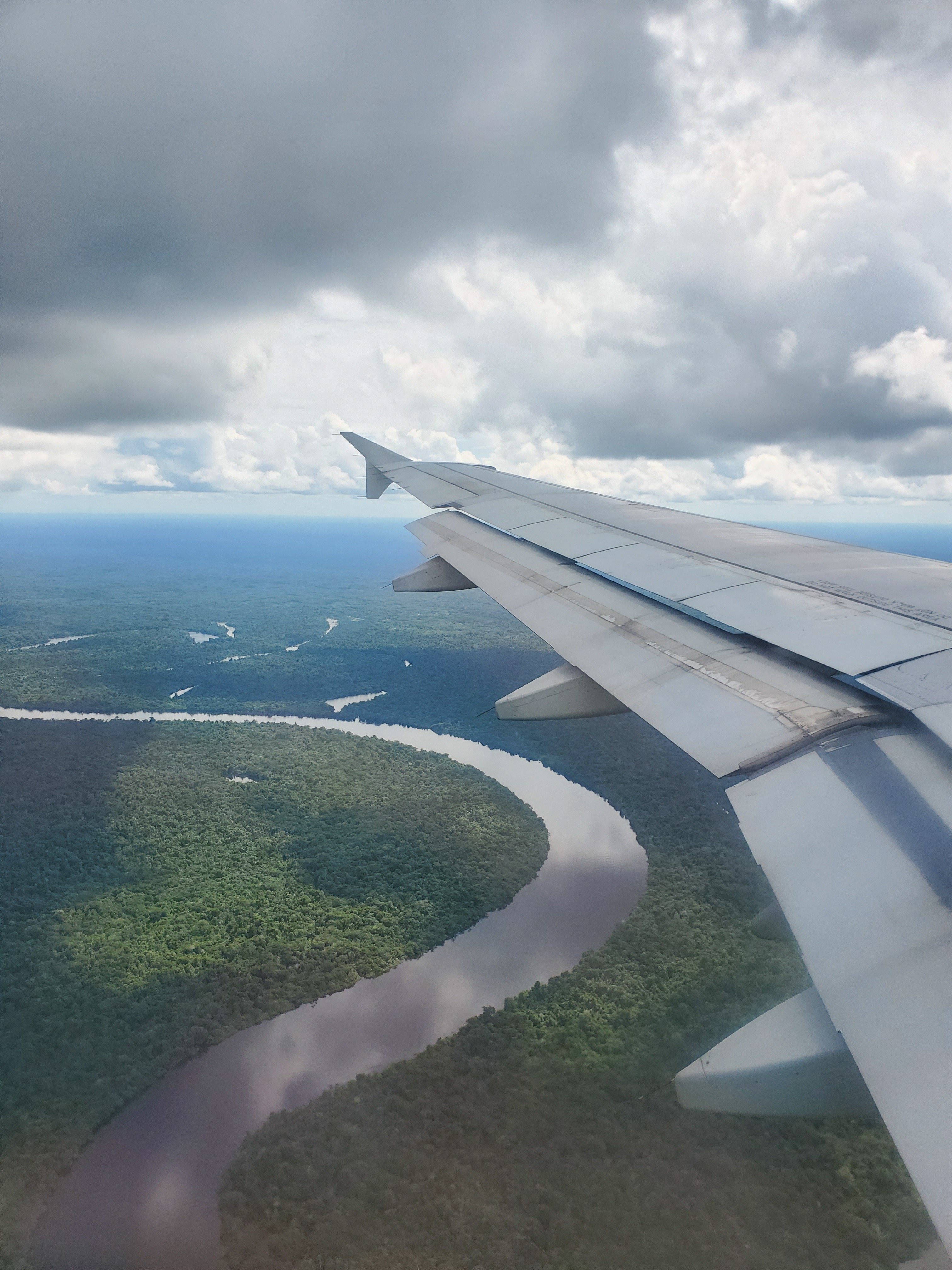 After being picked up in Iquitos, we drove through the Belen Market. Roaming Peruvian Hairless Dogs and Black Vultures perched on rooftops were a common sight in the market. We also saw medicinal plants, spices, fresh and grilled meats – it was an experience to see and smell.From there, we met up with our group of Peruvian educators and had lunch on the boat as we cruised down three rivers; the Rio de Itaya , Rio de Amazon, and Yanamono River. Along the way, we spotted countless rainbows, birds and small communities along the river. Upon arriving, it took no longer than a minute for the resident squirrel monkeys to captivate our team as they jumped from tree to tree.
After being picked up in Iquitos, we drove through the Belen Market. Roaming Peruvian Hairless Dogs and Black Vultures perched on rooftops were a common sight in the market. We also saw medicinal plants, spices, fresh and grilled meats – it was an experience to see and smell.From there, we met up with our group of Peruvian educators and had lunch on the boat as we cruised down three rivers; the Rio de Itaya , Rio de Amazon, and Yanamono River. Along the way, we spotted countless rainbows, birds and small communities along the river. Upon arriving, it took no longer than a minute for the resident squirrel monkeys to captivate our team as they jumped from tree to tree.
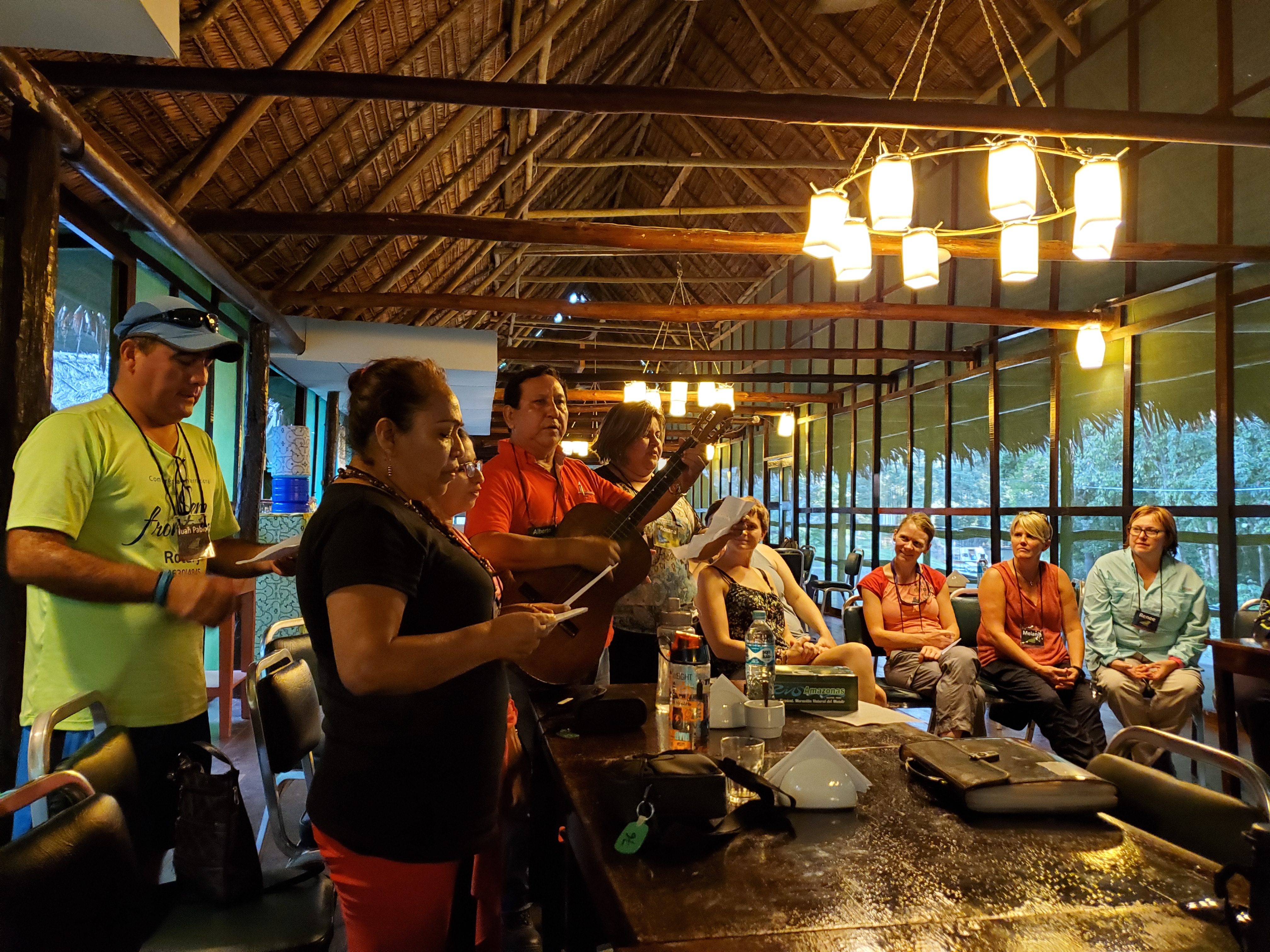 We are sharing a meal together before embarking on our first real Amazon adventure tonight: a night-time boat ride to find creatures and see new stars. Buenas noches y hasta manana!
We are sharing a meal together before embarking on our first real Amazon adventure tonight: a night-time boat ride to find creatures and see new stars. Buenas noches y hasta manana!
